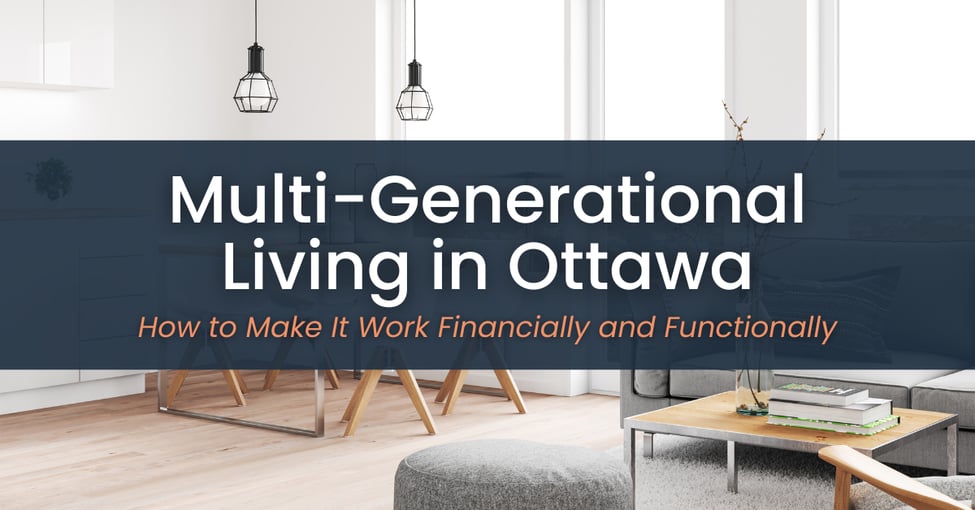As home prices rise and families become more interconnected, multi-generational living is on the rise in Ottawa. Whether it's aging parents moving in, adult children returning home, or siblings co-owning a property, shared living can offer powerful benefits — but it also requires careful planning.
In this blog, we’ll break down what multi-generational living looks like in Ottawa, how to split costs and ownership, and what types of homes work best for this arrangement — especially in communities like Greely, Riverside South, and Orléans.
1. What Does Multi-Generational Living Look Like in Ottawa?
Multi-generational homes are typically defined as households with three or more generations living under one roof — though even two generations (e.g. adult children and their parents) are becoming more common.
In Ottawa, this trend is growing due to:
High housing costs
Desire to care for aging parents at home
Rental shortages across the city
Cultural traditions supporting extended families
This trend is especially popular in suburban areas where larger homes, in-law suites, and secondary dwelling units (SDUs) are more available.
Explore listings in Greely with in-law suites or basement apartments → Greely Homes for Sale
2. Financial Strategies for Shared Living: How to Make It Fair
Living together can save money, but it’s critical to define clear financial agreements upfront. Here are three common models Ottawa families use:
A. Joint Ownership
Everyone is on title and contributes to the mortgage. This works well when multiple adult siblings or a parent and child co-purchase a home. Be sure to consult with a lawyer to structure the ownership and liabilities properly.
B. Rental Agreement Within the Family
One party owns the home, and the other(s) pay rent. This keeps things clean for tax purposes and may allow the owner to deduct some expenses.
C. Split Renovation/Upgrade Costs
Even if one person owns the home, the family may agree to share renovation costs, especially if they’re creating a basement apartment, coach house, or main-floor in-law suite.
Want to explore financing options for multi-generational homes?
Book a free buyer consultation to discuss mortgage structure, ownership models, and legal considerations.
3. What Kind of Home Works Best for Multi-Generational Families?
The ideal home setup depends on your needs — but these are common features to prioritize:
Separate entrances (for privacy)
Kitchens on two levels (or a kitchenette)
Multiple bathrooms
Finished basements with private access
Coach houses or SDUs on large lots
Communities like Greely and Manotick offer larger lots, while newer developments in Riverside South and Stittsville include homes with legal SDUs or separate suites.
Thinking of selling and upsizing into a multi-generational home? Find out what your current home is worth
4. Zoning & Legal Considerations in Ottawa
Before building or buying a home with multiple units, it’s important to understand Ottawa’s regulations:
SDUs (secondary dwelling units) are permitted in most residential zones, but must meet building and fire code.
Coach houses are allowed on detached homes in serviced and rural areas (like Greely).
Shared ownership can affect mortgage approvals, so consult your lender or Realtor early in the process.
Final Thoughts
Multi-generational living can be a smart move — both emotionally and financially — when set up properly. With Ottawa’s growing housing demand and limited inventory, more families are pooling resources to find homes that work for everyone.
As your local expert who’s helped many families transition into these arrangements, I can help you:
✅ Find homes with legal SDUs or in-law suites
✅ Navigate mortgage and legal planning
✅ Evaluate which Ottawa suburbs fit your needs best
Book a personalized buyer or seller strategy session
Let’s make your next move one that works for the whole family — together.

